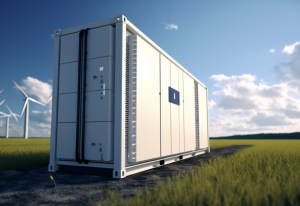Eco-Friendly and Efficient: Molybdenum Disilicide in Energy Storage
In an era of growing concern about the environment and a pressing need for sustainable energy solutions, molybdenum disilicide (MoSi2) emerges as a remarkable candidate that promises to revolutionize the landscape of energy storage. This compound, with its unique properties, is set to play a pivotal role in the development of next-generation energy storage devices, offering both efficiency and environmental sustainability.
Understanding Molybdenum Disilicide
Before delving into its role in energy storage, let’s grasp the fundamentals of molybdenum disilicide. This compound, composed of molybdenum and silicon, is renowned for its high-temperature stability and excellent electrical conductivity. These attributes make it highly desirable for various applications, particularly those involving extreme conditions.
The Energy Storage Challenge
Energy storage is a critical component of the global transition to renewable energy sources. Renewable energy generation, such as solar and wind power, is intermittent, making effective energy storage essential. Conventional energy storage technologies, like lithium-ion batteries, have been instrumental in this regard. Still, they face challenges related to resource availability, environmental impact, and scalability.

Molybdenum Disilicide as an Energy Storage Solution
Molybdenum disilicide offers a promising solution to many of these challenges. Here’s how:
- High-Temperature Resistance: One of the standout features of molybdenum disilicide is its ability to withstand extremely high temperatures without significant degradation. This characteristic is invaluable for energy storage applications where elevated temperatures can be encountered.
- Longevity: Energy storage systems using molybdenum disilicide components have the potential for extended lifespans. Unlike some conventional batteries that degrade over time, MoSi2-based systems may offer longevity, reducing the need for frequent replacements.
- Fast Charging and Discharging: Molybdenum disilicide’s excellent electrical conductivity enables fast charging and discharging of energy storage devices. This feature can enhance the responsiveness of energy storage systems to meet fluctuating energy demands.
- Abundant Materials: Molybdenum and silicon, the key constituents of MoSi2, are relatively abundant, reducing concerns about resource scarcity and associated geopolitical issues.
- Eco-Friendly: Perhaps most importantly, molybdenum disilicide is considered eco-friendly. Its production and use have a lower environmental impact compared to some traditional battery chemistries, such as those containing heavy metals like cobalt. This aligns with the global push for greener and more sustainable technologies.
Applications in Energy Storage
Molybdenum disilicide can be incorporated into various energy storage technologies, including thermal energy storage (TES) systems and high-temperature batteries. In TES, it can act as a heat-resistant material that efficiently stores and releases thermal energy, making it suitable for concentrated solar power and industrial applications.
Furthermore, MoSi2’s potential in high-temperature batteries can be transformative. These batteries can operate at elevated temperatures, enhancing their overall performance and safety. They have the potential to find applications in grid energy storage, electric vehicles, and aerospace, among others.
Challenges and Research
While molybdenum disilicide holds immense promise, there are still challenges to overcome. Research efforts are underway to optimize its use in energy storage systems, improve energy density, and address any remaining durability concerns.
In conclusion, molybdenum disilicide represents a beacon of hope in the quest for efficient and sustainable energy storage solutions. Its unique combination of properties positions it as a key player in the transition to a greener, more sustainable energy future. As research and development continue, we can anticipate even more exciting breakthroughs that will shape the way we store and utilize energy.
For more information about molybdenum products, please visit https://www.samaterials.com/6-molybdenum.html.



